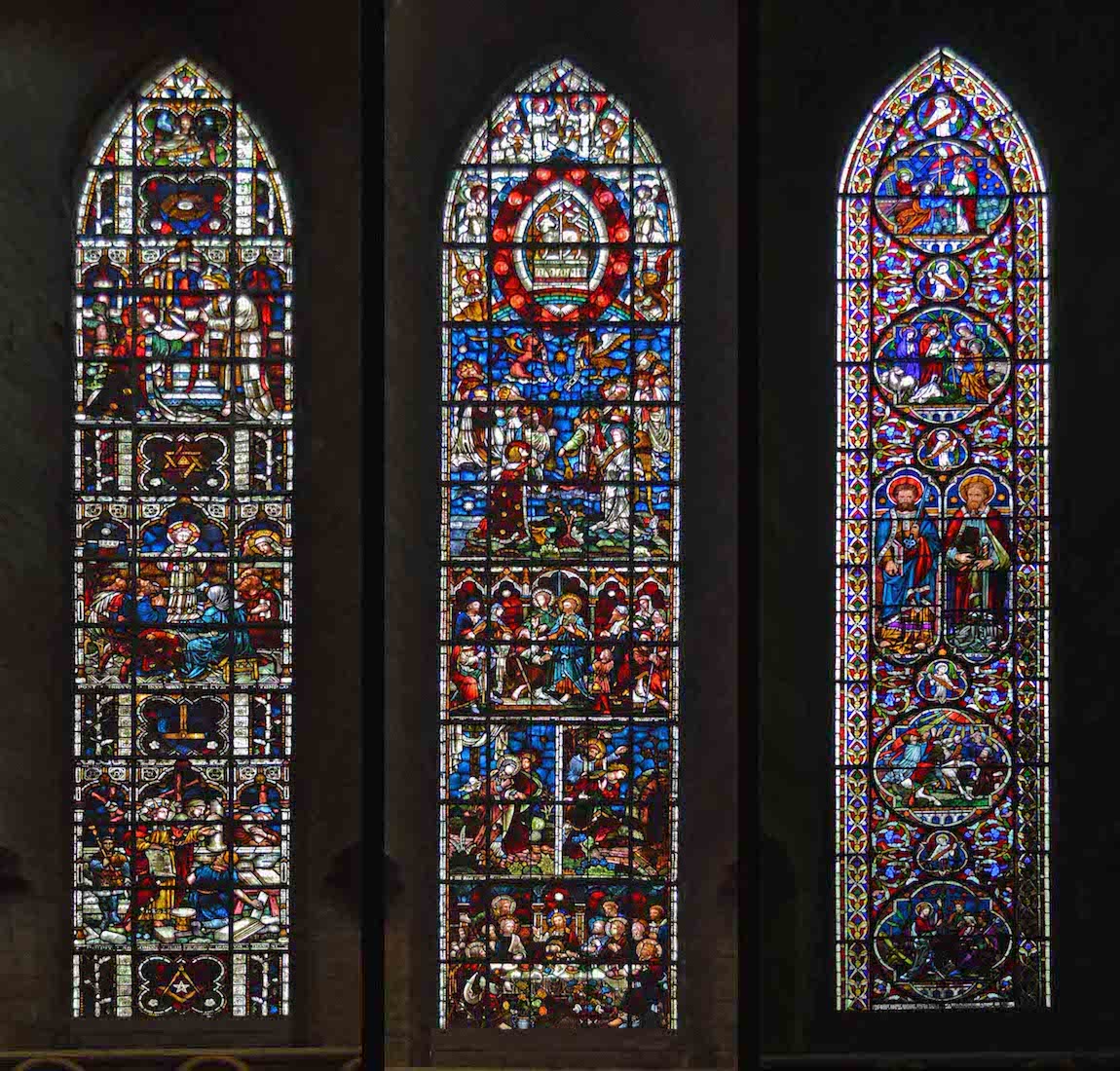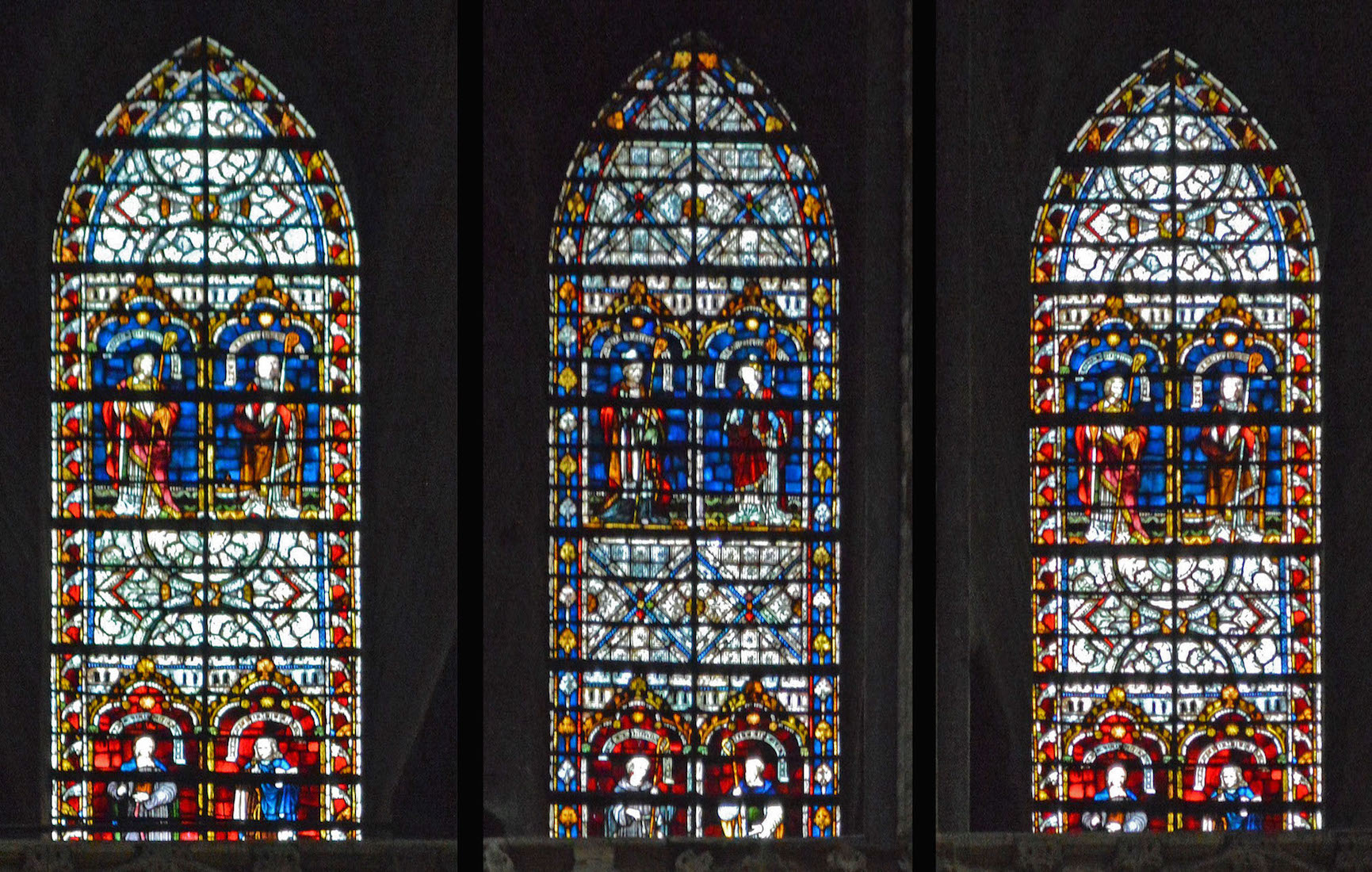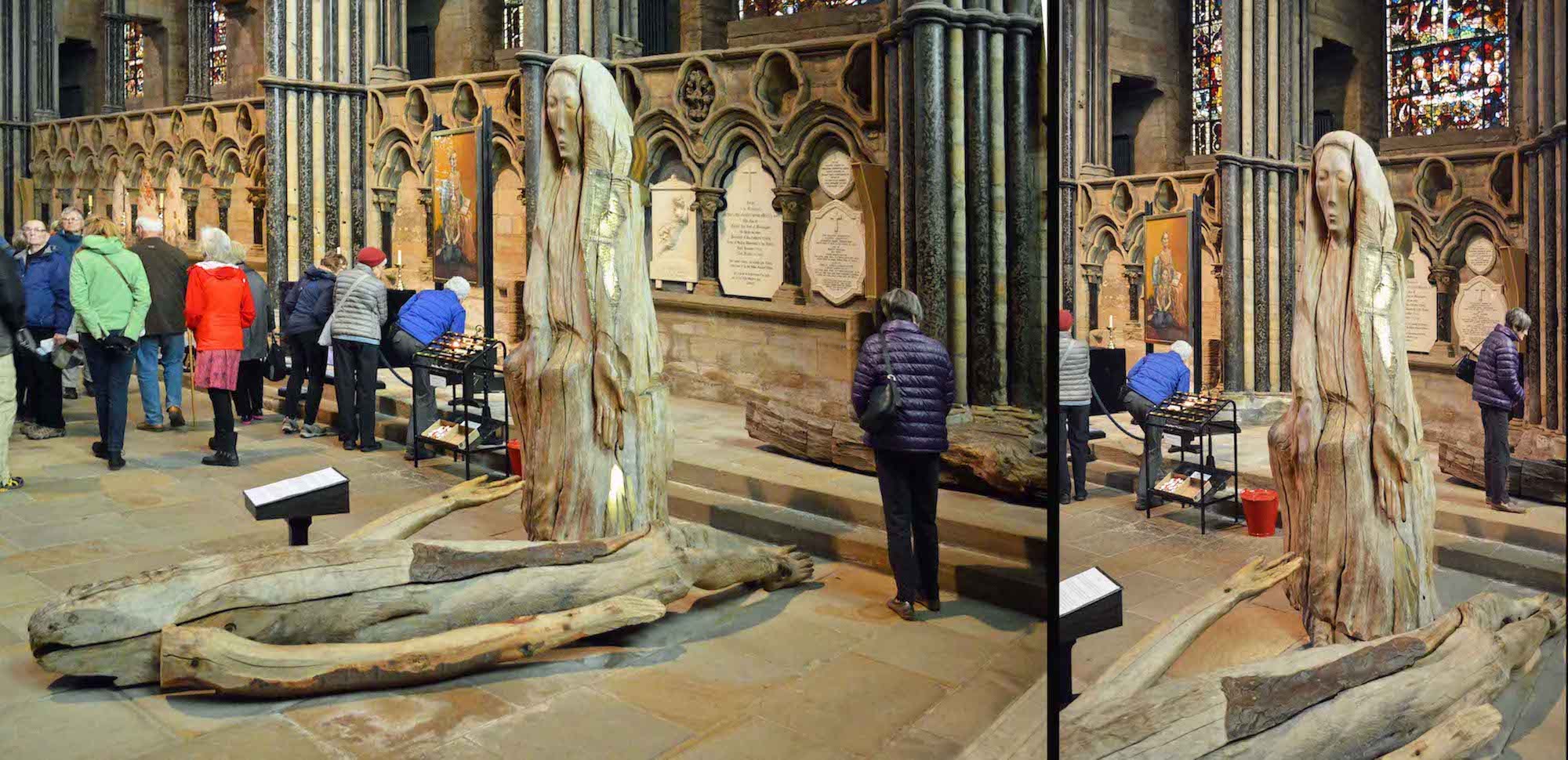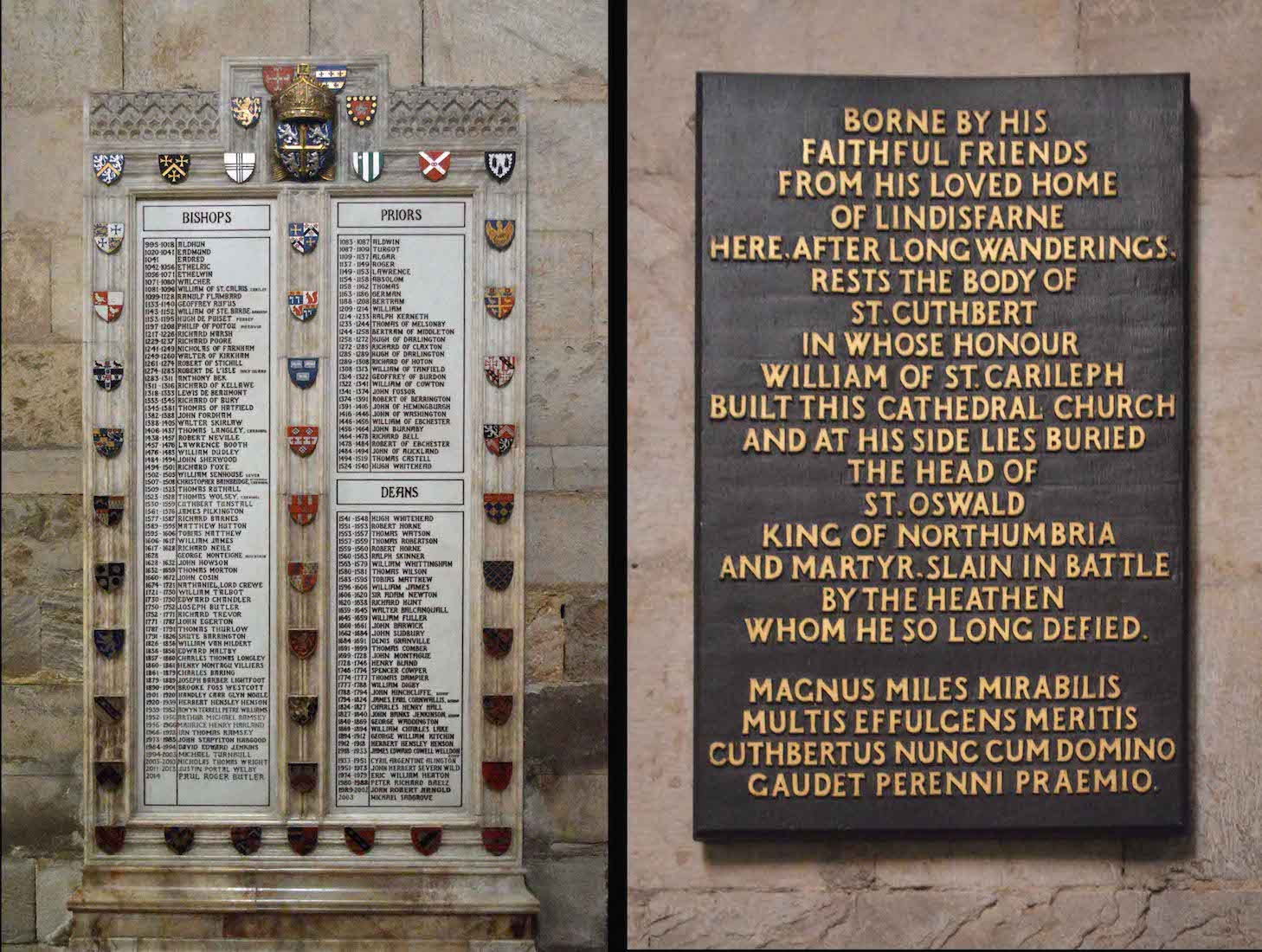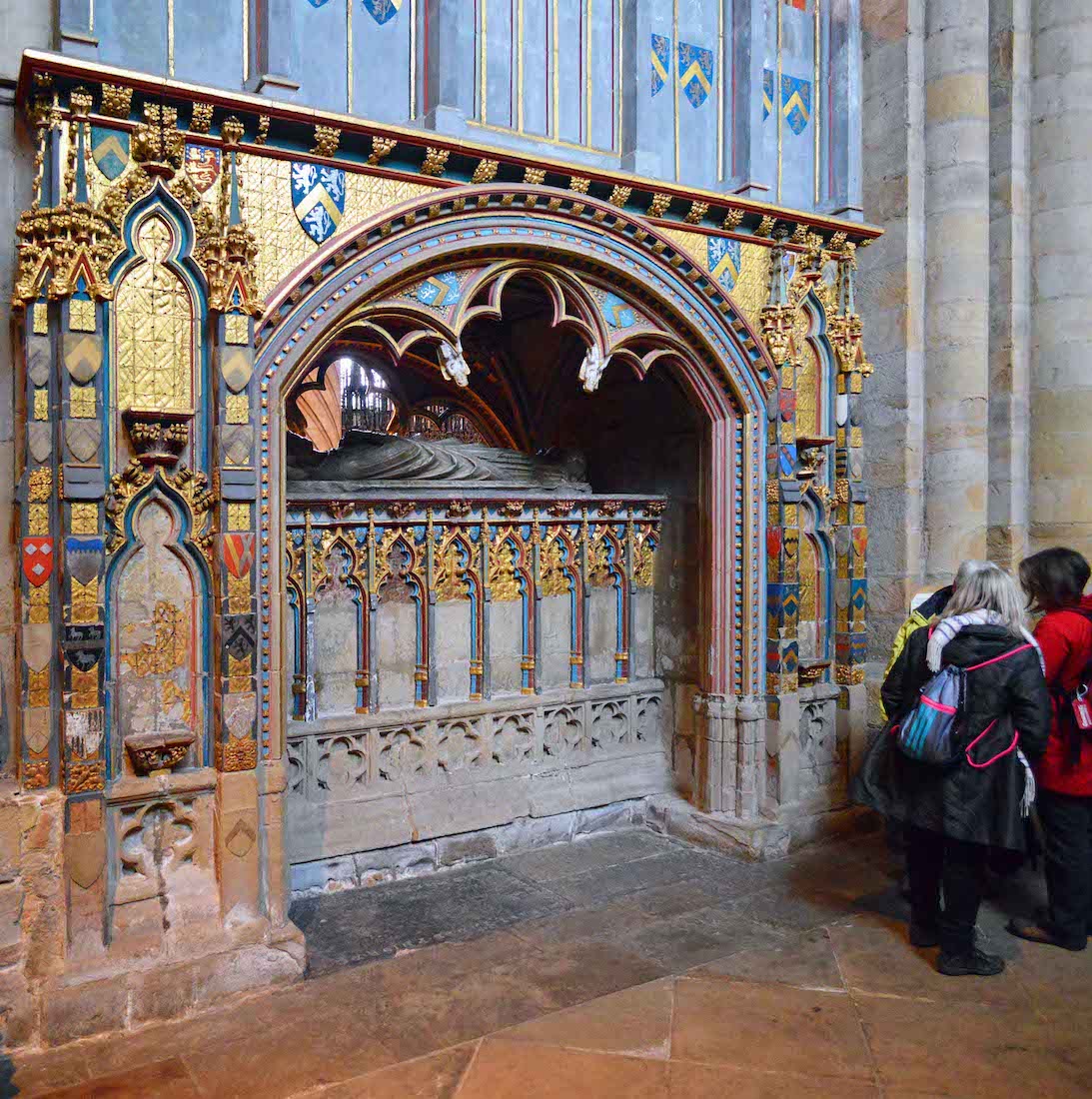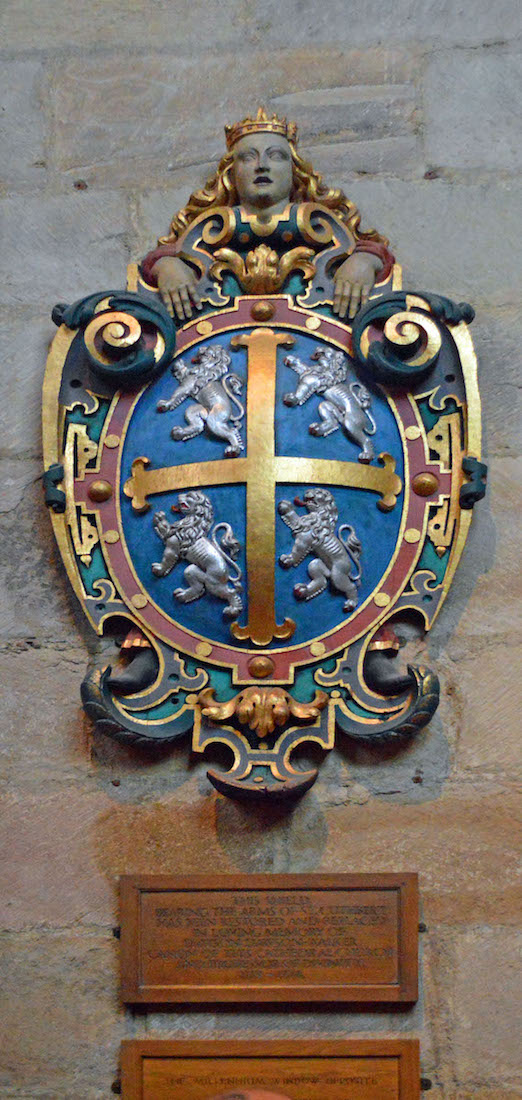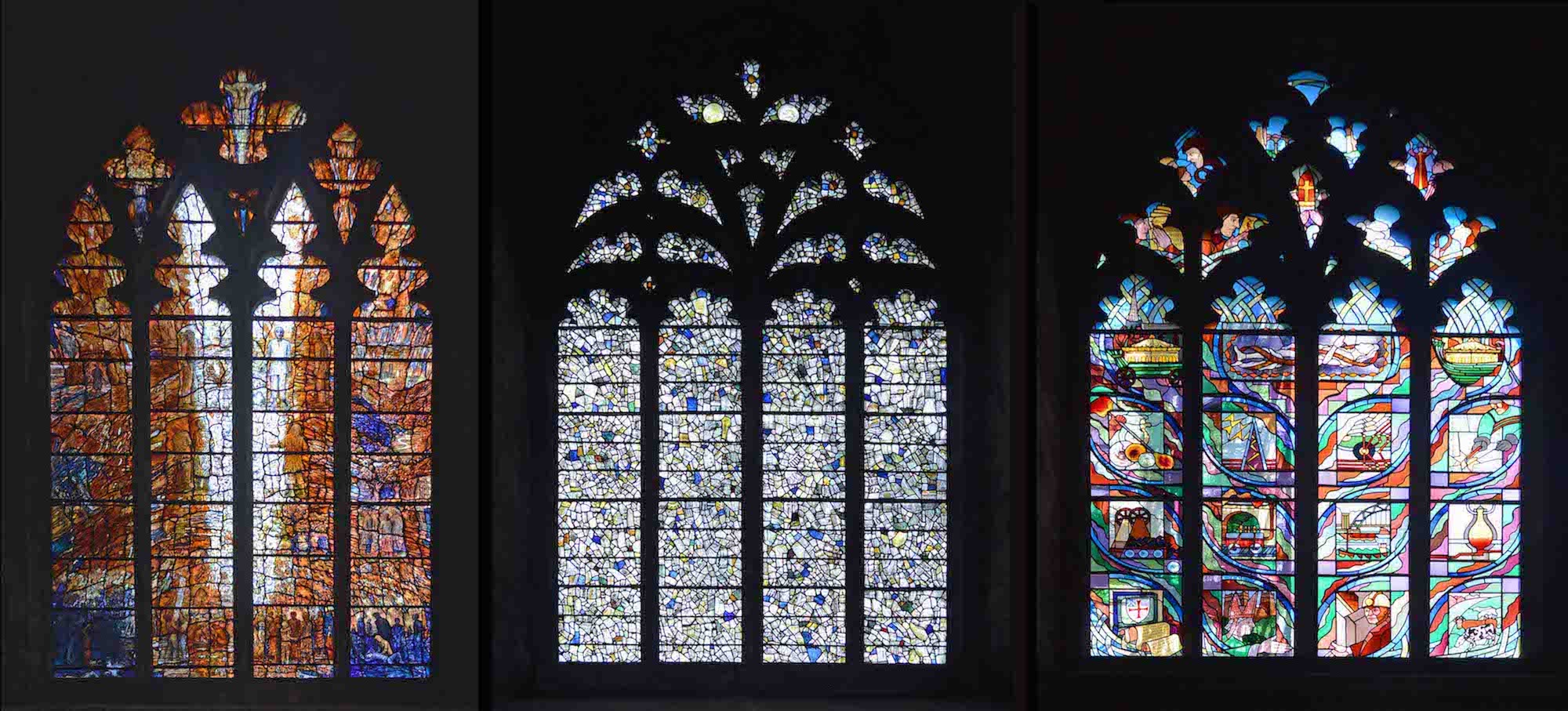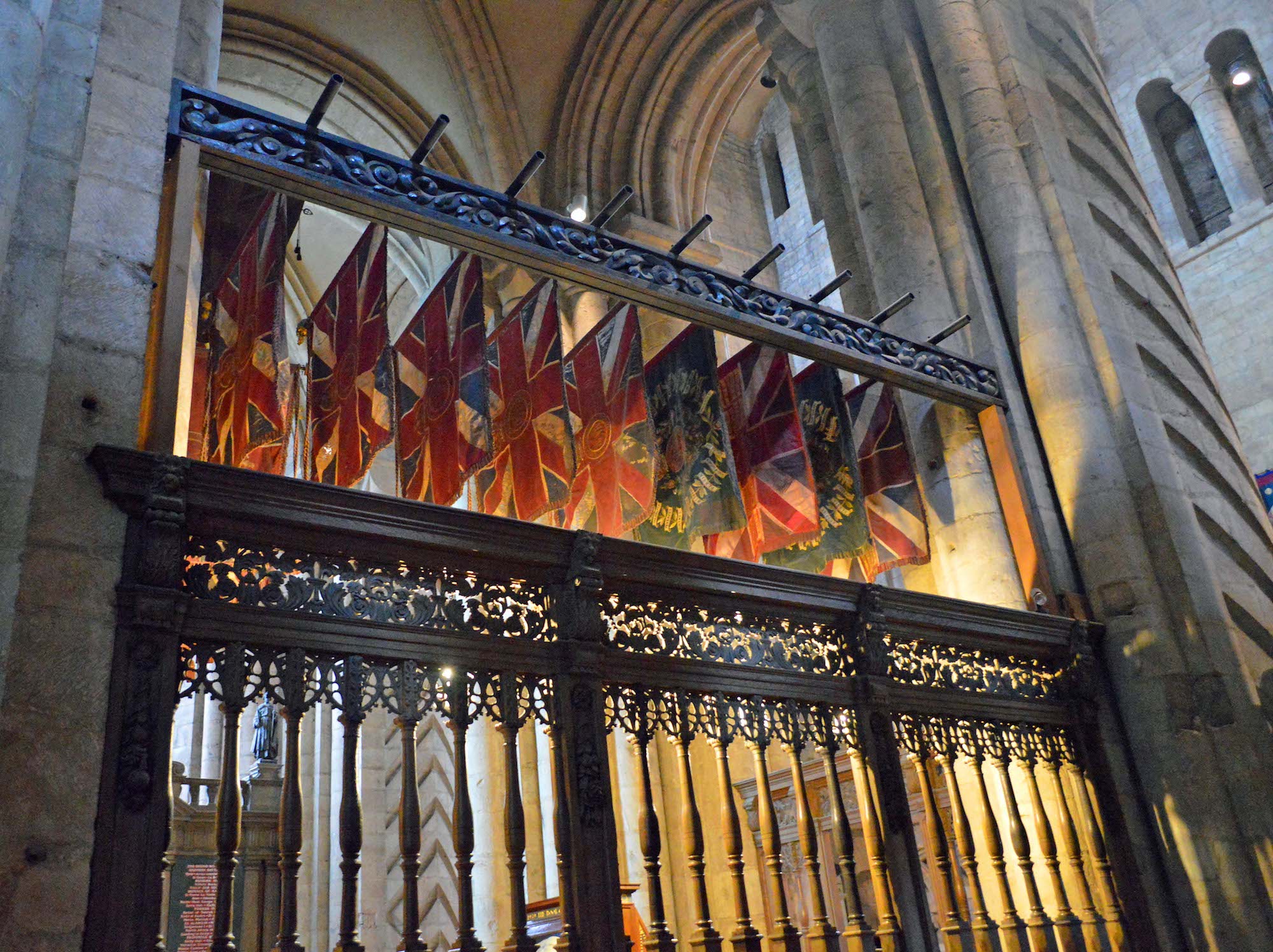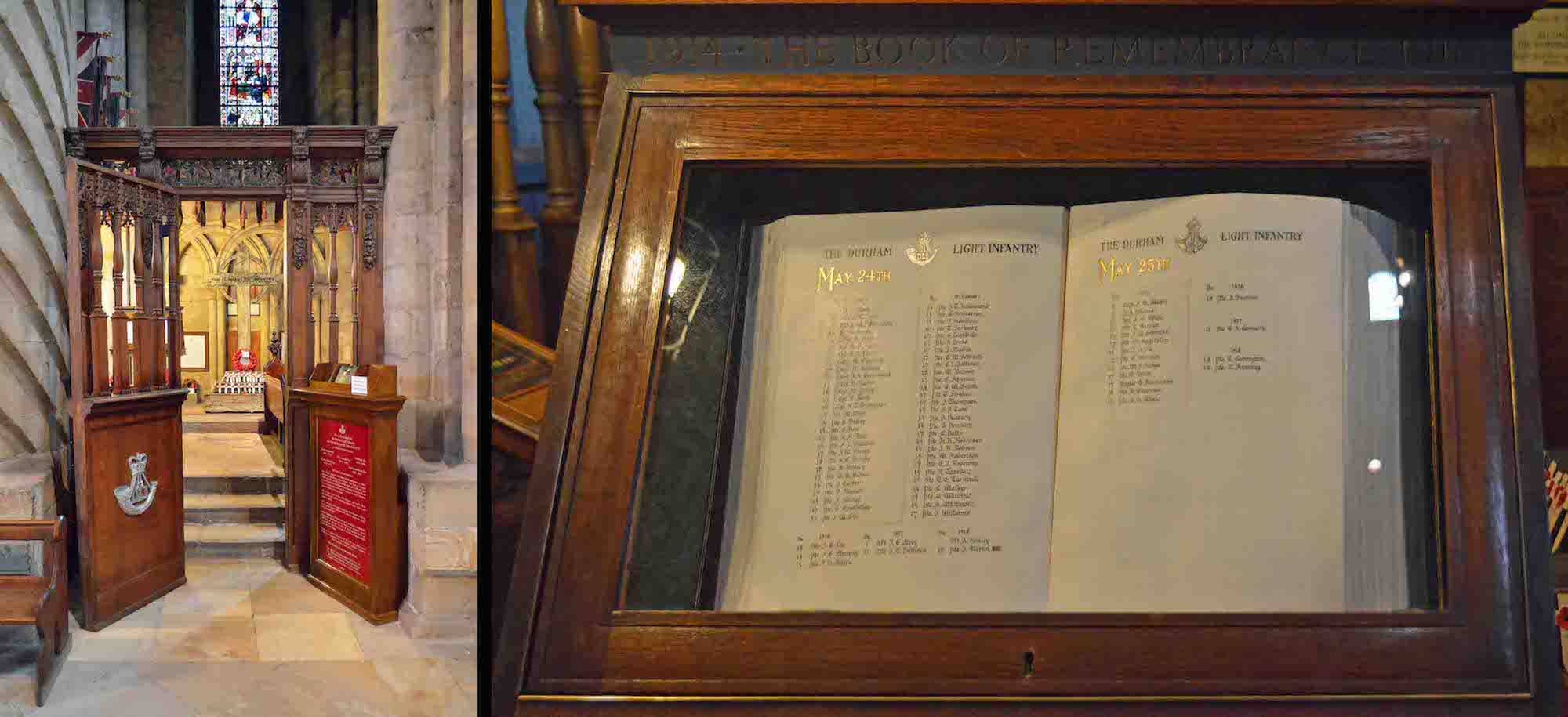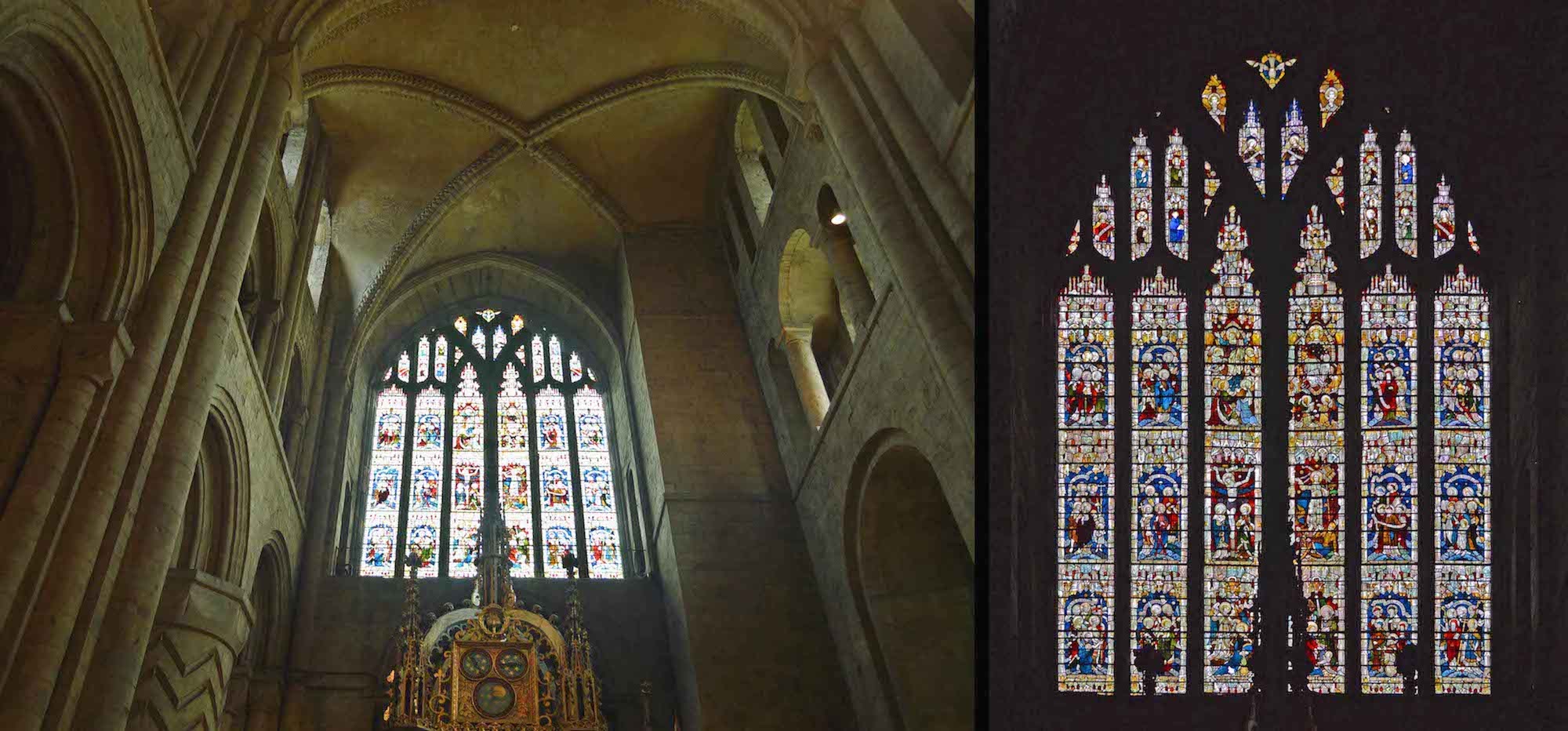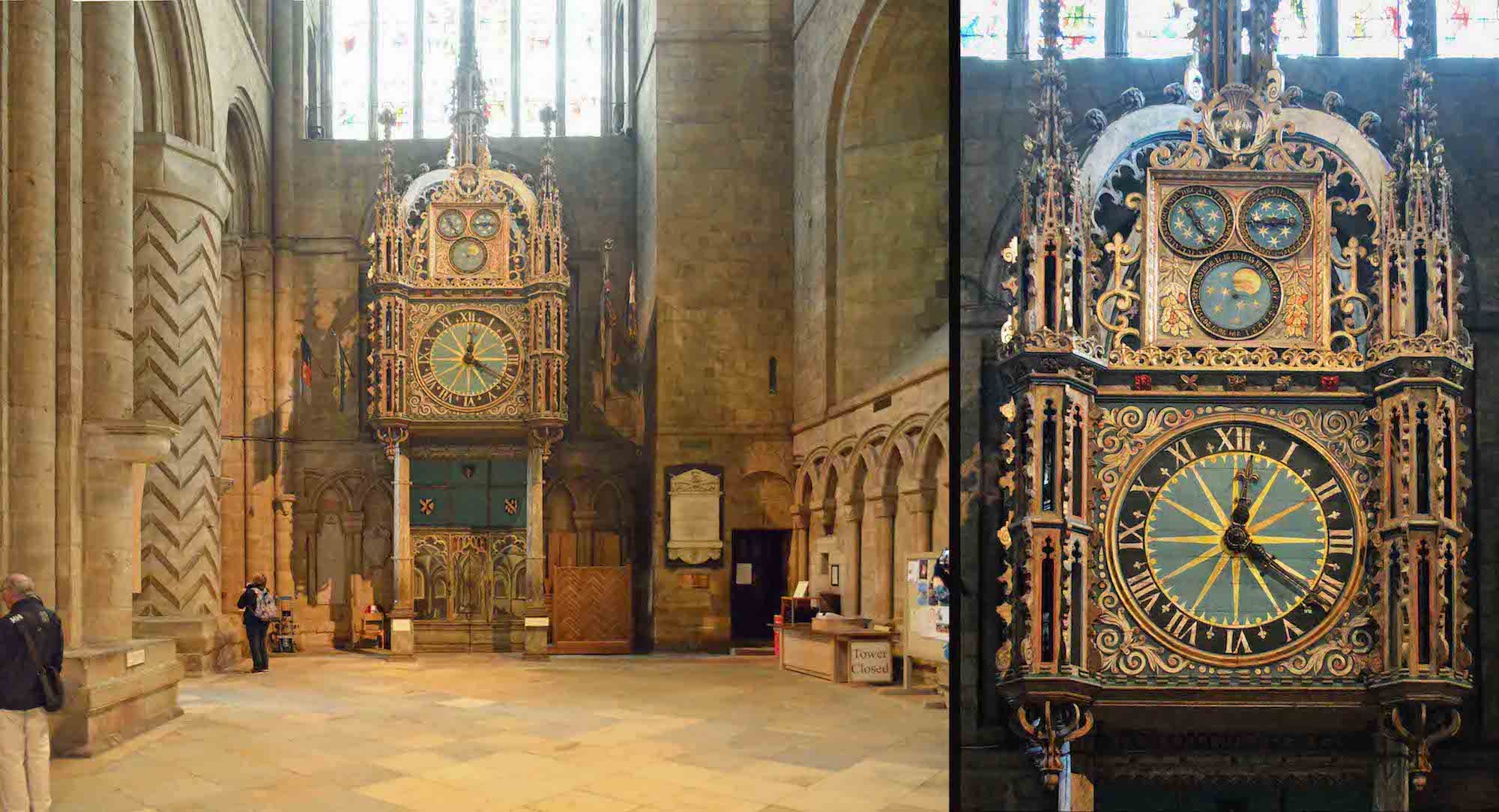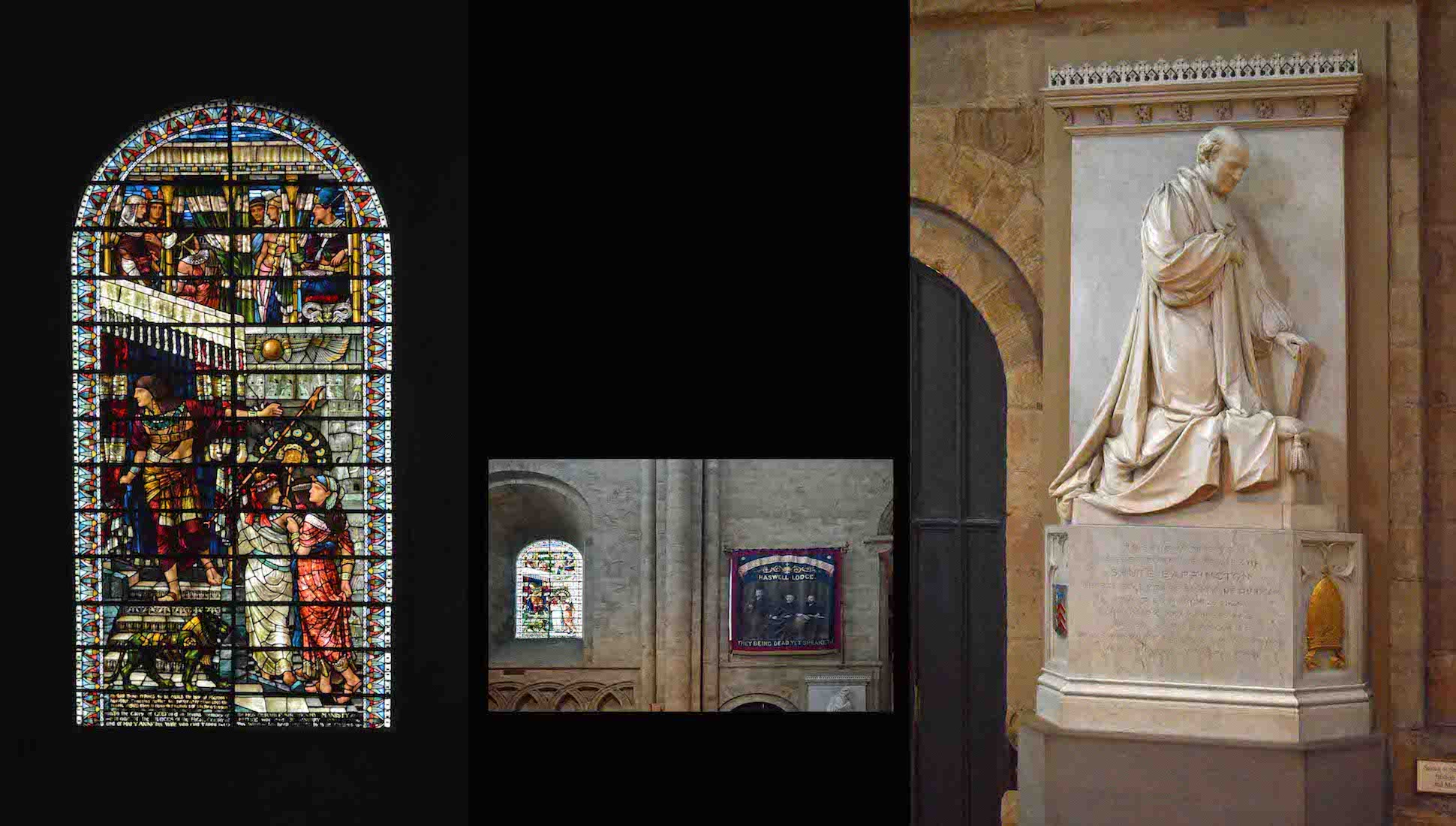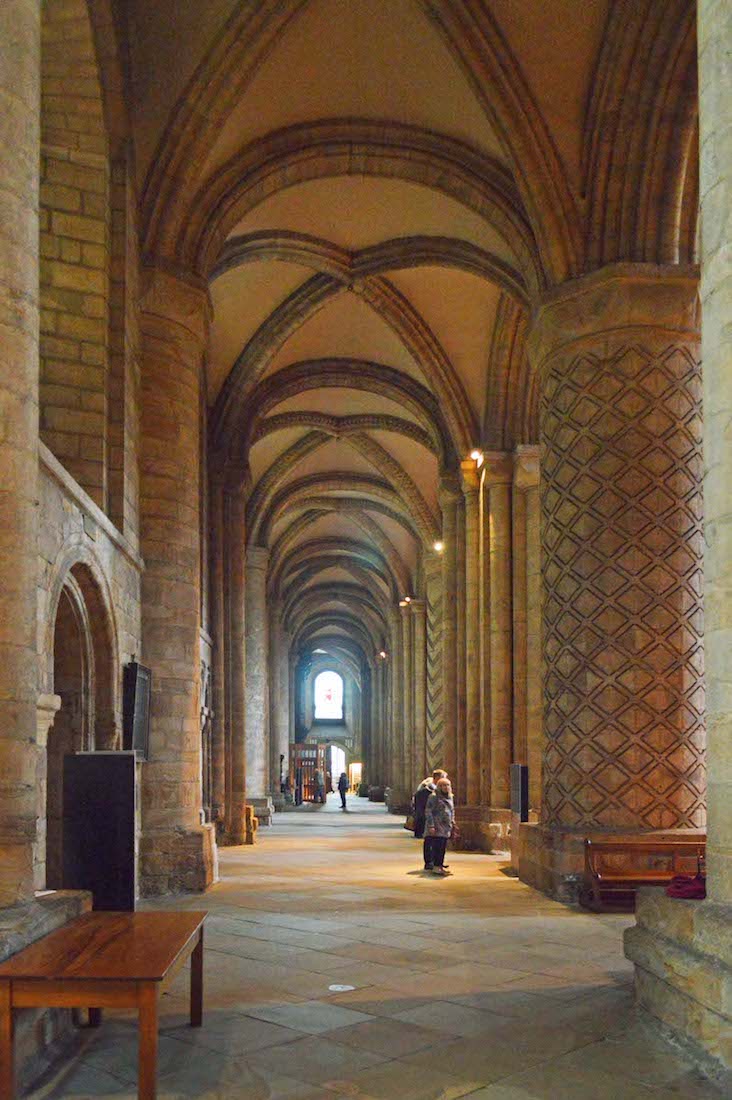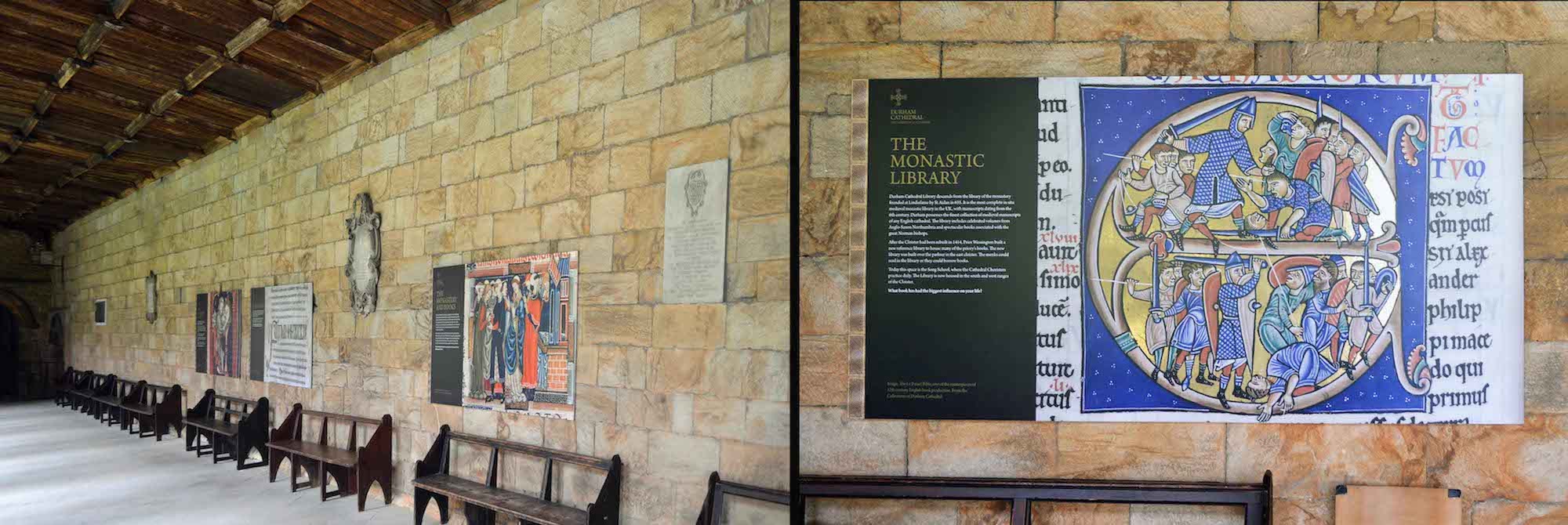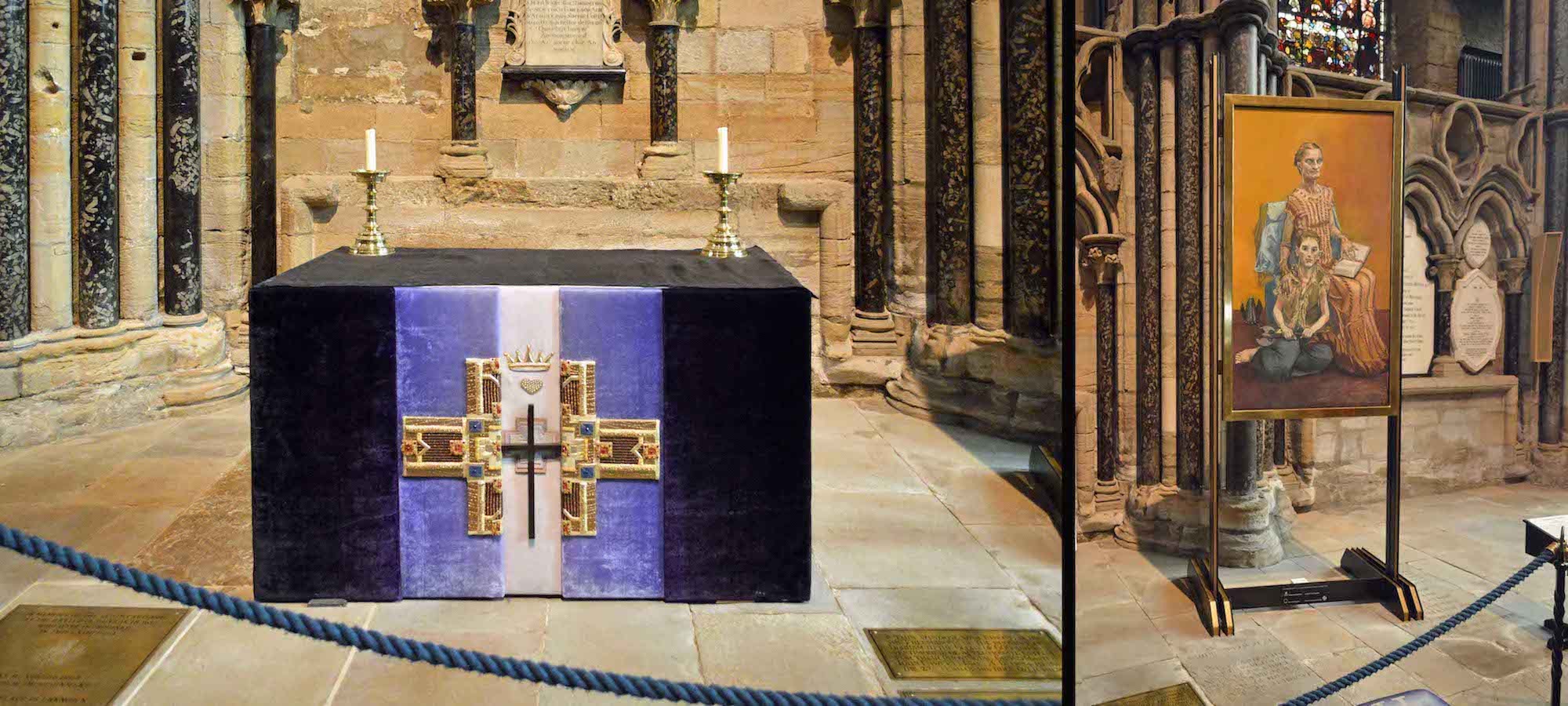
This is the altar to St Margaret of Scotland (1045-1093). The painting is by Paula Rego and shows the saint towards the end of her life with her son David, future King of Scotland. There are also three kneelers, reading ‘Wear’, ‘Forth’, and ‘Danube’ – all rivers associated with St Margaret.. PLAN
62. CHAPEL EAST WINDOWS (SOUTH)
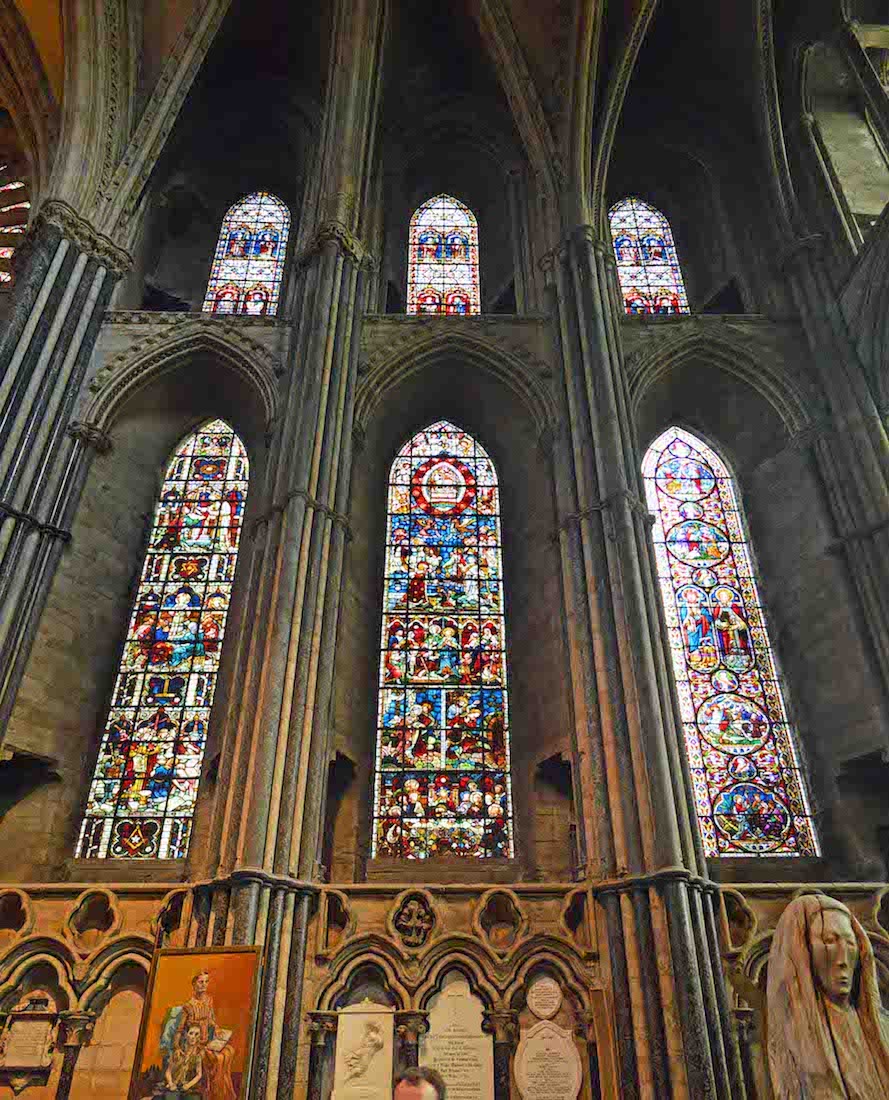
Behind the altar to St Margaret of Scotland are a further set of stained glass windows.
63. CHAPEL LOWER EAST WINDOWS (SOUTH)
These windows form rather a strange mix. The window at right is quite different from the others in style, and shows Saints Peter and Paul. The window at left appears to have a strong Masonic influence, with the bottom scene the building of the temple. The central window depicts the worship of the Lamb, New Testament preaching, Expulsion from the Garden, and the Last Supper.
64. CHAPEL UPPER EAST WINDOWS (SOUTH)
Like the corresponding upper windows on the North side, we have depicted here six pairs of figures with no identification.
65. PIETÀ
There is also a sculpture by Fenwick Lowson. His pietà, the wooden sculpture of Mary looking down at the body of her son, took seven years to complete. It captures well the trauma of the mother outliving her child.
66. SOUTH QUIRE AISLE
We now leave the Chapel of the Nine Altars and proceed up the South quire aisle. This side of the steps there is an entryway into St Cuthbert’s shrine, and two wall plaques. Beyond the steps we catch a glimpse of a chantry and a blue coat of arms.
67. WALL PLAQUES
At left is a list of the Bishops, Priors and Deans of Durham Cathedral, dating from 995. I am always amazed at the vast span of history encompassed in lists like this. At right we have some details about St Cuthbert and St Oswald, and the reason this Cathedral was built.
68. BISHOP HATFIELD CHANTRY
Continuing up the quire aisle we come to Bishop Hatfield’s chantry and tomb. Bishop Thomas Hatfield lived 1365-75. He was Bishop of Durham from 1345 to 1381. Hatfield was Receiver of the Chamber when he was selected to be Lord Privy Seal in late 1344. He relinquished that office to his successor in 1345. Hatfield College, a constituent college of the University of Durham is named after him.
69. COAT OF ARMS
The sign beneath this recurring coat of arms tells us that the shield bears the arms of St Cuthbert.
70. SOUTH QUIRE WINDOWS
These windows are on the South wall of this aisle. The Transfiguration window (2009) at left was designed by Tom Denny and installed in memory of Bishop Michael Ramsey (1904-88). The Millenium window (1997) at right commemorates the 1000th anniversary of the arrival of St Cuthbert’s body in Durham. The images symbolize aspects of Cuthbert's life, and recent history of the region including mining, ship-building, steam locomotives and Durham University.
71. DURHAM LIGHT INFANTRY CHAPEL
The DLI Chapel lies to the East of the South transept. First established as the 68th regiment of foot soldiers in 1758, The DLI was formalised as such in 1881. It first saw action in Egypt and in South Africa during the Boer War. The death toll on the DLI was very heavy in WWI, with more than 12,600 dead and thousands wounded. We shall enter the Chapel from the South transept.
72. MEMORIAL BOOK
These two books, on permanent display in the DLI Chapel, commemorate those who died in the two World Wars. The pages are turned daily, as the books are in date order with the casualties recorded on the date that they died. In the WWI book especially, the same surnames appear time and again – neighbours, friends, and relatives were encouraged to join up to form ‘pals’ battalions’.
73. CHAPEL ALTAR
The DLI played an important role in the First and Second World Wars, fighting in every major battle.
The regiment remained until 1968, at which point it was decided that it would join with two other county light infantry regiments to form the Light Infantry. On December 12th 1968, the DLI paraded its flags inside Durham Cathedral for the last time.
74. DLI CHAPEL WINDOWS
The window at right contains a panel which is the St Leonard’s window of the mid 15th century. It was restored in memory of Henry Barker Tristram, Canon of Durham.
75. SOUTH TRANSEPT ‘TE DEUM’ WINDOW
This window was unveiled in 1869 in memory of Charles Thorp, Archdeacon of Durham, who was instrumental in the foundation of Durham University in the 1830s. The window cost £650 and incorporates some fragments of medieval glass in its upper sections. Below the window is the lovely 16th century Prior Castell's Clock, placed in the cathedral during the time of Prior Thomas Castell (1494-1519).
76. PRIOR CASTELL’S CLOCK
The clock is the Cathedral’s only wooden object known to have survived the English Civil War. This was purportedly because it is embellished with a thistle, the symbol of Scotland, and was therefore spared being used as firewood by the Scottish army, who used the Cathedral as barracks in the 1640s. The clock originally only had one hand, and has an unusual face with 48 (instead of the usual 60) markings.
77. WEST WALL OF THE SOUTH TRANSEPT
The window depicts a scene from the life of Moses. It was in memory of Sir Henry Manistry and his wife Mary Ann. It was designed in 1895 by Henry Holiday who was the illustrator of Lewis Carroll’s ‘The Hunting of the Snark’. To the right stands a statue of Bishop Barrington (1734-1826), penultimate holder of the title of Prince-Bishop. He patronized the arts, founded a co-operative society and fostered improvements in agriculture.
78. NAVE SOUTH AISLE
We have now returned to the nave, and the South aisle. We shall now make our way to the cloisters. The door at the West is most likely to be open, leading as it does to the shop and the restaurant!
79. CLOISTER
The Cloister was the hub of Benedictine life – the order of monks that lived and worshiped here before the Dissolution of the Monasteries by Henry VIII in 1539. Originally the Cloister was glazed, and the monks washed (the stone basin in the middle of the grass is what remains of their lavabo), exercised, taught and studied here. The Cloister was laid out when the Cathedral was begun in 1093, though much of it now dates from the 15th century and later.
80. CLOISTER WALLS
The cloister walls now have various plaques and information posters attached. Durham Cathedral Library descends from the library of the monastery founded on Lindisfarne by St Aidan in 635. When the community left Lindisfarne in 875, the monks took with them relics of St Cuthbert, and a number of books. These probably included the famous manuscript now known as the Lindisfarne gospels.


